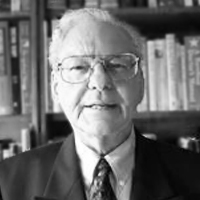This text based course is a transcript of the live webinar titled "Complementary/Alternative Medicine and Occupational Therapy", presented by Franklin Stein, Ph.D., OTR/L, FAOTA.
>> Franklin Stein: It is my pleasure to present this seminar on complementary and alternative medicine in occupational therapy. Complementary and alternative medicine (CAM) is now becoming extremely important in all of the fields of healthcare. I want to share all the knowledge I have gained in my long years of practice.
Introduction
Introductory Questions Relating CAM to Occupational Therapy
Is CAM congruent with the underlying values of occupational therapy?
Occupational therapy actually started as an alternative to traditional or allopathic medicine in the early 1900s. When I was a young occupational therapist in the late 1950s and early '60s, occupational therapy was mainly a profession that used arts and crafts. Just think how much occupational therapy has evolved from the 1950s and 1960s. In this lecture, we will take a look at this question and show how complementary and alternative medicine is congruent with the underlying philosophies and values of occupational therapy.
Does CAM fit into the use of meaningful and purposeful activities that really define occupational therapy?
Many of the CAM activities, whether it is mindfulness, an exercise, or type of activity, help the individual to become more healthy. Complementary and alternative medicine is made up of a variety of techniques.
Who owns CAM?
There are many health professions now who use CAM. In addition to physicians, who use alternative techniques as well as traditional medicine, nursing, physical therapy, and speech pathology all use CAM.
What are the specific expertise, licensing, and certification requirements for using CAM?
Expertise and licensing in recent years have changed the whole picture of CAM. There are specific recommendations and we will talk about that.
Factors in Treatment Effectiveness
The first important assumption we have to look at is treatment effectiveness. When we look at any type of intervention, these four aspects are going to affect the efficacy of CAM.
Therapeutic Relationship
If there is not a good therapeutic relationship, it does not matter what the intervention is, it is not going to work unless the therapist and the client establish a relationship that assumes that they are working towards the client's objectives.
Client Diagnosis
The next question is client diagnosis. The physician makes the diagnosis. It is very important that the proper complementary and alternative medicine or intervention is used when working with the patient. The symptoms and problem are extremely important in the treatment efficacy.
Occupational therapy actually started as an alternative to traditional or allopathic medicine in the early 1900s. When I was a young occupational therapist in the late 1950s and early '60s, occupational therapy was mainly a profession that used arts and crafts. Just think how much occupational therapy has evolved from the 1950s and 1960s. In this lecture, we will take a look at this question and show how complementary and alternative medicine is congruent with the underlying philosophies and values of occupational therapy.
